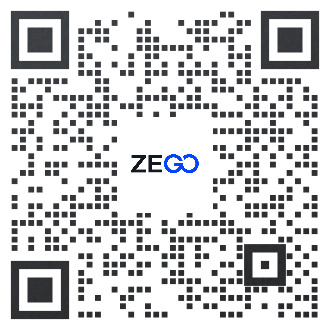- Documentation
- Cloud Recording
- Overview
Introduction
What is Cloud Recording
ZEGOCLOUD's Cloud Recording is an add-on service to record voice calls, video calls, and interactive streaming on your cloud storage by simply integrating and calling the ZEGOCLOUD APIs. With Cloud Recording, you can record the calls or live streaming for your users to watch at their convenience.
Why Cloud Recording
High reliability
Deploys global clusters to provide high-availability services. An automatic disaster recovery scheme during the recording to prevent the recordings from being lost. Automatic stores recordings upon failures of the third-party cloud storage and uploads upon recovery.
High security
Provides end-to-end security by uploading all recordings to the user-specified cloud platforms, using token authentication and AES encryption when publishing streams, encrypting transmission channels for data transmission.
High compatibility
Supports storing recorded files in third-party cloud storage, such as Alibaba Cloud, AWS S3, Tencent Cloud, Qiniu Cloud, Alibaba Cloud VOD (MP4, FLV) based on your needs.
Easy to use
Provides easy-to-use APIs for you to integrate. The recordings can be in MP4, FLV, or HLS formats, which can be replayed directly without further operations.
Flexible options
Provides rich features to be combined as needed. Enables you to use the Cloud recording Service in different scenarios.
Provides a wealth of functions. Customers can flexibly combine various functions according to their business needs, seamlessly apply them to different business scenarios, and achieve more complete services.
Features
| Feature | Description |
|---|---|
| Single-stream recording | Records the audio and video as separate files for each user in a room. |
| Mixed-stream recording | Generates single mixed audio and video files for multiple specified users in a room. |
| Multi-sector recording | Records the whiteboard files and the audio/video streams (can be used in conjunction with the Single-stream/Mixed-stream recording modes). |
| Set mixed-stream layout | In mixed-stream recording mode, you can customize the mixed-stream layout or use predefined layouts. The predefined layouts are as follows:
|
| Autocomplete video images | Stay recording and display the last image of the user when the streaming operation is interrupted in the room, and connect with the latest video image once the user resumes streaming. |
| Screenshot in single-stream recording mode | In single-stream recording mode, video screenshots are supported. The screenshot interval can be configured. The recording server will automatically capture images and upload them in real-time to the specified third-party cloud storage. |
| PowerPoint recording | Supports recording the animation effects and embedded audio and video in PowerPoint slides. |
| Third-party cloud storage | You can store recorded files in the following third-party cloud storage services.
|
| Server-side event notification callback | Supports server-side event notification callbacks. By using this callback, you can receive notifications of different recording statuses, such as:
|
Use cases
| Industry | Description |
|---|---|
| Online education | Provides high-quality voice and video recordings for one-to-one and one-to-many online courses. Students can replay recordings for review at their convenience. |
| Live streaming | Replays the highlights of the live streaming, captures screenshots, and can be used for content moderation. |
| Financial industry | When conducting financial management, account registration, and face-to-face businesses, the audio and video recordings can be used for record-keeping and archival purposes. |
| Customer service/Call centers | The recordings of consultation or query service can be used for customer research and service quality evaluations. |
| Remote healthcare | Recordings of remote diagnoses and online medical consultations enable patients to acquire medical resources in remote or inaccessible areas. And can be used as references for subsequent treatments. |
Usage Limitations
Fault Migration
To address network failures and risks that may arise from infrastructure and force majeure factors not introduced by ZEGOCLOUD products, the cloud recording service supports automatic task migration in the event of a failure, ensuring a relatively good user experience. Once a failure is confirmed, the service will complete the migration in the shortest possible time, during which there may be risks of recording interruptions and loss of recording files.
For scenarios with high reliability requirements for recording services, developers can decide whether to accept the business risks caused by fault migration and consider using multi-path recording and real-time monitoring callbacks to obtain recording service status information to adjust the recording service process.
Service Concurrency
The upper limit of the video file specifications supported by cloud recording in single-stream recording is a resolution of 1920 * 1080, a frame rate of 60 fps, and a bitrate of 20 Mbps. The upper limit of the audio file specifications is a bitrate of 192 Kbps.
For a single AppID, the maximum concurrency limit for recording tasks is 200. If adjustments are needed, please contact ZEGOCLOUD technical support.
API Rate Limiting
For the cloud recording server-side APIs, the QPS (Queries Per Second) can be found in the API reference - API Overview.
Please set the number of API requests on the your side according to the QPS. If adjustments are needed, please contact ZEGOCLOUD technical support.
Recording File Upload
After recording ends, the recording files are usually uploaded to the specified third-party cloud storage within a certain period. If the upload fails, the recording files will be temporarily stored in the backup storage of the cloud recording service, supporting storage for up to 3 days, during which users can transfer the files.
- Free trial
- 提交工单咨询集成、功能及报价等问题电话咨询400 1006 604Get ConsultingScan Wechat QR code

